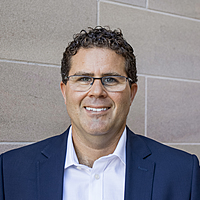Two global themes SMSF investors should take note of
Investors in self-managed super funds (SMSFs) don’t seem to ascribe to traditional approaches of modern portfolio theory. According to its architect, Harry Markowitz, investors can design an ‘optimal’ portfolio to maximise returns by taking on risk – and risk can be managed through diversification across asset classes.
According to the ATO’s most recent Self-managed super fund statistical report,
the average SMSF had nearly half of its portfolio invested in Australian shares and a quarter in cash investments.
Exposure to global equities, either direct or via managed investments, averaged less than one percent. By eschewing global equities, you’re missing out on the benefits of several global themes that will play out over the coming years.

Consumer staples
Consumer staples are those businesses that cater to our everyday needs. While the Australian market has several, with Wesfarmers and Woolworths the largest, most are domestically focused. The global players have access to much larger markets in developed and developing nations and greater growth potential as a result.
Consumer staples tend to do well regardless of the economic cycle, because they provide essential products – such as food, liquor and household products – that people are unable or unwilling to cut out of their budgets, irrespective of the economic climate. As such, consumer staples are considered defensive stocks and tend to perform well when economic growth starts to weaken.
Case study: Nomad Foods – consumer staples
Nomad Foods’ (Nomad) management team has new leadership, under which it has strengthened its market share to 20% in the UK frozen foods market. It’s slowly being re-rated by the US market as word spreads that the team’s building a European foods powerhouse.
Nomad has been trading on a heavily discounted valuation multiple relative to its peer group, largely because the market gave management no credit for being able to grow the business. There was also a lack of awareness about the business, because only one or two investment banks covered the stock.
A strategic change, a refocusing on the core business and ‘must win battles’, has seen a re-rating. The management team is working to reinvigorate the core brands; the fruits of these actions are becoming evident, with organic revenue growth of 3% in the last quarter and operating earnings growth of 16%.
Nomad has moved from being about turning around underperforming brands to one which is on firm footing where core brands are delivering. They have recently been on the acquisition trail purchasing market leaders in the UK, which strategically increases Nomad’s share of the UK frozen foods market and increases bargaining power with core retail customers.
Digital disruption
Disruption through technology is happening everywhere. You will have heard of cryptocurrencies such bitcoin and its underlying technology blockchain, and most will have used platforms such as Uber, Spotify or Netflix, each of which has turned a traditional business model on its head.
For every business adversely impacted by disruption, there are others that flourish.
Companies that provide the technology to operate these businesses, the service companies that spring up to assist their users, data providers. Some disruptive industries, such as the driverless car, bring together a myriad of business – traditional auto manufacturers, component providers, engineering and technology businesses.
Case study: Automated vehicles – disruption
There are numerous stages that will emerge over next decade before ‘every day’ cars become completely driverless. Change is structured around a five-stage framework, advancing from Level 0 (manual driving) to Level 5 (full automation). Presently, the most advanced cars are at level 2 autonomy, where a car provides partial driving assistance and might automatically brake if it senses a collision. For example, the current BMW 5 series has 23 sensors in the car with cameras, lidars and radars.
The next stage of autonomy will be level 3, where the driver will be able to take a break from driving. The car will signal to the driver when manual driving is required, after sufficient warning. High definition mapping will be added to vehicles on top of cameras and sensors.
Level 4 is the stage of robo taxis; you will still need the driver in the car, but the car will be in effective control. BMW expects to get to this level by 2025. Level 5 is completely autonomous driving; this however, is dependent on governments having the confidence to regulate in favour of it.
Manufacturers of cars, components and related technology will benefit from this shift. According to David Wilson, a planning professional part-way through a PhD doctoral thesis on the topic, automation will shake up the car industry. In his view,
the car industry will go from a pyramid structure, with global carmakers on the top supported by suppliers, to a hub and spoke integrated network.
While global carmakers may be at the centre, they will be surrounded by equally powerful suppliers, including technology giants such as Google and Microsoft, and industrial companies such as Siemens.
There are many thematics backing investment in a wide range of businesses across the globe. While a number of Australian companies may play a supporting role, to maximise your benefit, you need to invest beyond Australia’s shores. As well as growth potential, investing globally has the added benefit of portfolio diversification…and based on ATO data, it seems there’s a number of SMSF portfolios that need some diversification!
Want to find out more?
Did you know that 98% of the world’s investment opportunities are located outside of Australia? We enable investors to access companies from different regions and industries under represented in our domestic market. Find out more
4 topics
1 stock mentioned
